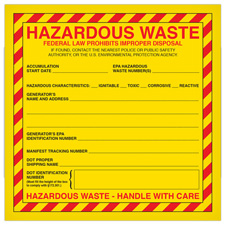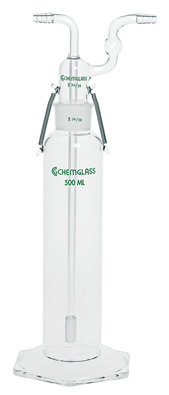| The Home page of ILPI's Safety Data Sheet (SDS) Resource, the leader in SDS information since 1995! | |
| The history and philosophy behind this resource. | |
| A curated collection of books and reference materials concerning Safety Data Sheets and closely related topics. | |
| Paste your plain text SDS into the SDS-Demystifier, and it will be converted into a hypertext-enriched document with links to detailed explanations of each key term. | |
| An extensive list of frequently asked questions about Safety Data Sheets including regulations, content, compliance, and more. | |
| A humorous take on Safety Data Sheet jargon. Fill in the blanks on our entry form to generate a personalized Unsafety Data Sheet to share with your coworkers. | |
| Since 1995, we've maintained this massive curated list of the best places to find Safety Data Sheets on the Internet. | |
| You are here! Way more than a glossary, this hypertext-enhanced resource covers hundreds of SDS-related terms and expert knowledge. Each entry includes both the SDS relevance and links to additional authoritative resources. | |
| Archived results of Safety Data Sheet related polls taken by some of our millions of site visitors | |
| The OSHA regulations behind SDS regulations, including the inspection guidelines and over 400 official interpretations letters under the Hazard Communication Standard | |
| Commercial suppliers of SDS authoring and management software as well as cloud compliance services. | |
| Commercial companies that will create SDS's for your specific needs as well as SDS translation companies. |

Safety signs, banners, and scoreboards? Get yours at Safety Emporium!
Definition
Jaundice is a condition marked by a yellowish color to the skin and the whites of the eyes.
Jaundice is a sign of hyperbilirubinemia a high level of bilirubin (a substance that comes from the natural breakdown of the heme portion of hemoglobin) in the body. Typical causes are excessive breakdown of red blood cells or a hepatic (liver) dysfunction.
Excessively high levels of bilirubin are harmful and can cause brain damage, but the cause of the jaundice is usually a larger problem.

Get your hazardous waste labels from Safety Emporium.
Additional Info
There are many underlying causes for jaundice, so treatments may vary. Typical causes include hepatitis, obstructive jaundice (blockage of the bile ducts of the liver, perhaps by gallstones), or cirrhosis of the liver (often caused by chronic drinking, but not always). People with Gilbert's Syndrome (pronounced "zheel-BAYRS") may suffer occasional bouts of jaundice, but this is a benign condition that does not require treatment; see Further Reading below for more information.
More than half of newborn infants experience neonatal jaundice, a condition that usually clears up on its own as the baby's liver function develops in the first few days of life. One effective treatment for neonatal (newborn infant) hyperbilirubinemiais (jaundice) is called phototherapy, where the patient is put under special fluorescent lamps to help break down the excess bilirubin. This can be done at home with supervision or on an outpatient basis.
SDS Relevance
Jaundice is a general symptom of impaired liver function. Occupational exposure to chemicals such as chloroform and other solvents can negatively affect liver function and lead to hepatitis. OSHA has singled out 4,4'-Methylenedianiline (MDA) as a substance that can cause cancer and also damage the liver, kidneys, blood, and spleen with long term exposure.
Therefore, always be sure to study the health risks on your Safety Data Sheets (found on Section 11 (toxicological information) of the sheets) BEFORE using new chemicals. And once you understand the health risks, follow the recommendations on the SDS to minimize your exposure to such agents using engineering controls (such as fume hoods and ventilation) as well as proper personal protective equipment (gloves, goggles, respirators etc.).
Further Reading

Safety Emporium has the solution to your laboratory needs with an extensive line of glassware.
- Jaundice at the Merck Manual Professional version has an excellent technical article that begins with a discussion of bilirubin metabolism.
- Jaundice for medical professionals at Patient.info. A patient/consumer version is also available.
- Jaundice - Yellow Skin at the NIH's Medline Plus.
- OSHA's Substance Data Sheet, for 4,4'-Methylenedianiline (1910.15050 App A) as well as its medical surveillance guidelines (1910.1050 App C) which has detailed technical information on jaundice and liver damage.
- Toxic Hepatitis at the Cleveland Clinic.
- Toxic hepatitis in occupational exposure to solvents from World J Gastroenterol 2012, 18(22), pp 2756-2766.
- Toxic Jaundice From Occupational Exposure to Chloroform from Med J Malaysia 1983 38 pp 31-34.
- Gilbert's Syndrome causes jaundice but does not require treatment.
- Jaundice In Healthy Newborns at KidsHealth.org.
- The American Liver Foundation for info about all liver disorders.
See also: hepatic.
Additional definitions from Google and OneLook.